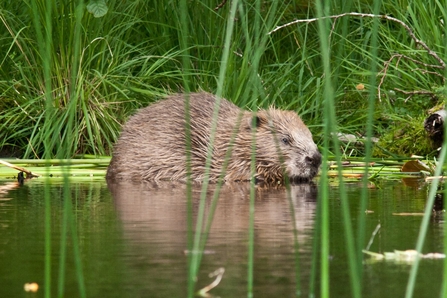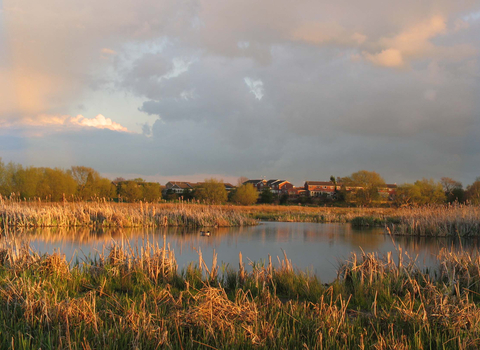What are wetlands?
Wetlands are special places characterised by high water levels, waterlogged soils, and specially adapted plants. They might be permanently wet or only flood seasonally. Wetlands include marshes, wet grassland, floodplains, and fens.
These are places where water and dry land meet, and are home to a wide range of species, from dragonflies and damselflies, to wading curlew and snipe; from carnivorous plants to flitting butterflies. Wetlands are fantastic places to spot a huge variety of birds. Teeming with insects, rich in plants and a haven for mammals, wetlands offer an unforgettable experience.
Watch the video below to see what wetland restoration work we are doing in Staffordshire to help in the fight against climate change.
Why are wetlands important?
These beautiful areas are a vital part of our natural world – the lives of animals, plants and people depend on them being in a good condition. Healthy wetlands store carbon and slow the flow of water, cleaning it naturally and reducing flood risk downstream. They support an abundance of plant life, which in turn provide perfect shelter, nurseries and breeding grounds for wildlife.

A natural solution to the climate crisis
Plant matter steadily decays and accumulates in the waterlogged conditions of wetlands, meaning they are hugely important for holding carbon. However, the ability of a freshwater wetland habitat to capture carbon varies according to the condition of the wetland.
Good management is critical to ensuring that the habitat can store more carbon for years to come. It is also vital that our remaining high-quality wetlands are protected, as it can take decades for restored wetlands to be able to draw down carbon at the same rate as natural wetlands.

Threats and pressures
Wetlands can accumulate carbon for centuries, but in some areas of the UK we have lost over 90% of our wetland habitat. Between 2006 and 2012, over 1,000 hectares of wetland was converted to artificial surfaces.
Raised bogs especially have been (and in some places still are being) destroyed or degraded through industrial peat-cutting for fuel or use in gardens.
Wetlands vary greatly. Some wetlands are very extensive, such as blanket bog, while others are naturally more localised, such as upland spring and flush. In other cases, particularly in the lowlands, drainage for agriculture and industrial-scale peat-cutting has reduced or destroyed many wetlands. Areas of raised bog, fen and reedbed are now a fraction of what they once were.
Some types of wetlands are now legally protected, but in spite of that many are still not in good condition.
Restored wetlands provide rich habitat, clean water naturally and reduce flood risk downstream.
In some areas of the UK we have lost over 90% of our wetland habitat
Conservation and recovery
Policies to protect wetlands, such as restricting abstraction (the removal of water), as well as projects to restore them, are important tools to help the UK to build nature-based solutions to climate change.
By reducing drainage and over-abstraction, supporting the return of beavers, and naturalising rivers, wetlands will be able to lock up more carbon, support more wildlife, and provide many other vital benefits like flood prevention!

What wetland restoration has the Trust done?
An example of wetland restoration the Trust have carried out is to manage wetland nature reserve Doxey Marshes so that it provides space for floodwater storage which has helped to protect Stafford from flooding. Looking after the site means that the wetland soils are working to capture carbon helping to mitigate climate change. Wetland vegetation can capture up to 22 tonnes of carbon per hectare per year! The reserve is also one of the county's best bird watching locations. 200 bird species have been spotted and over 80 breeding species recorded at Doxey Marshes such as Lapwing and Snipe .
Let nature help
Find out more about the other Nature based solutions work the Trust is doing in Staffordshire and how it is helping to fight climate change

